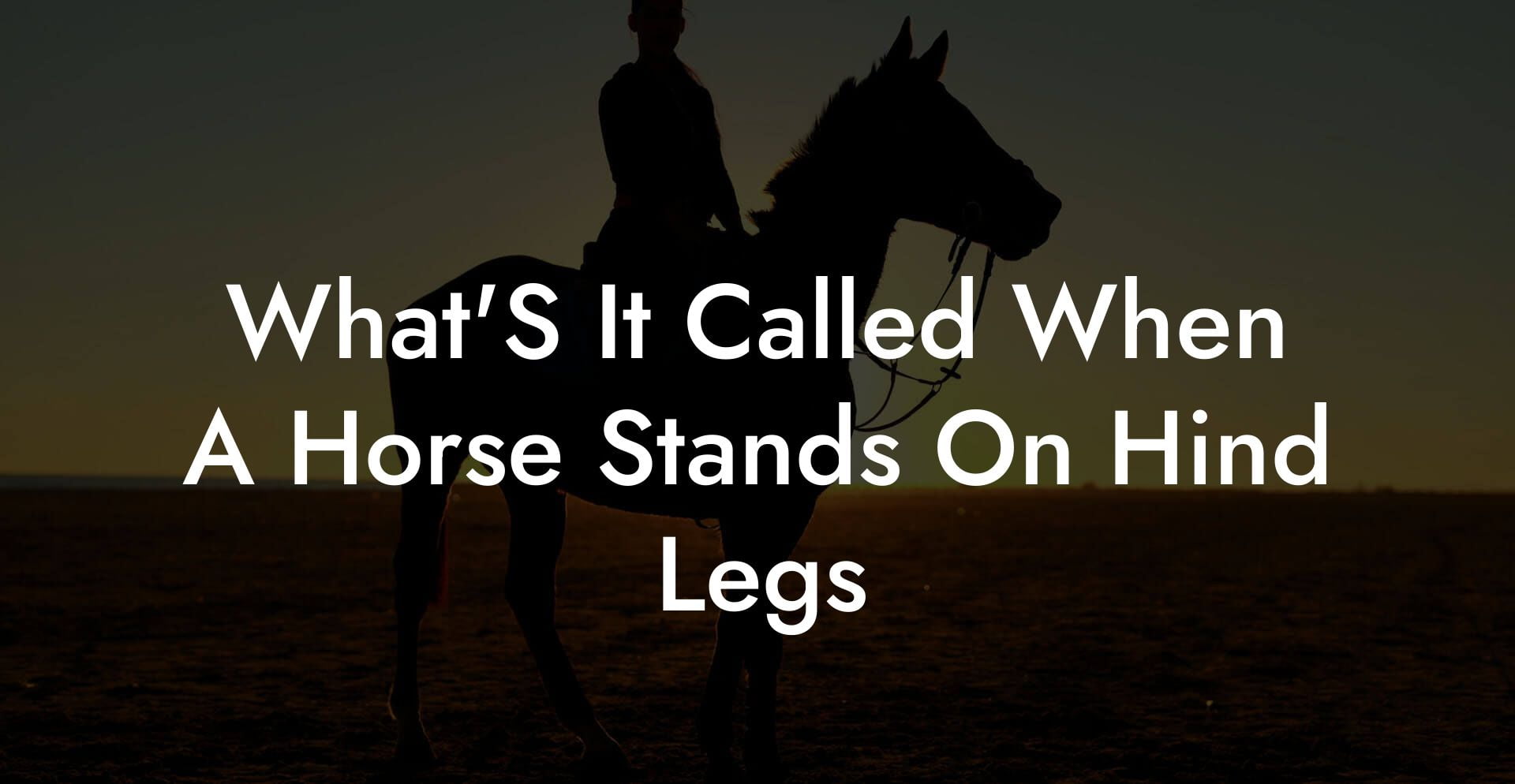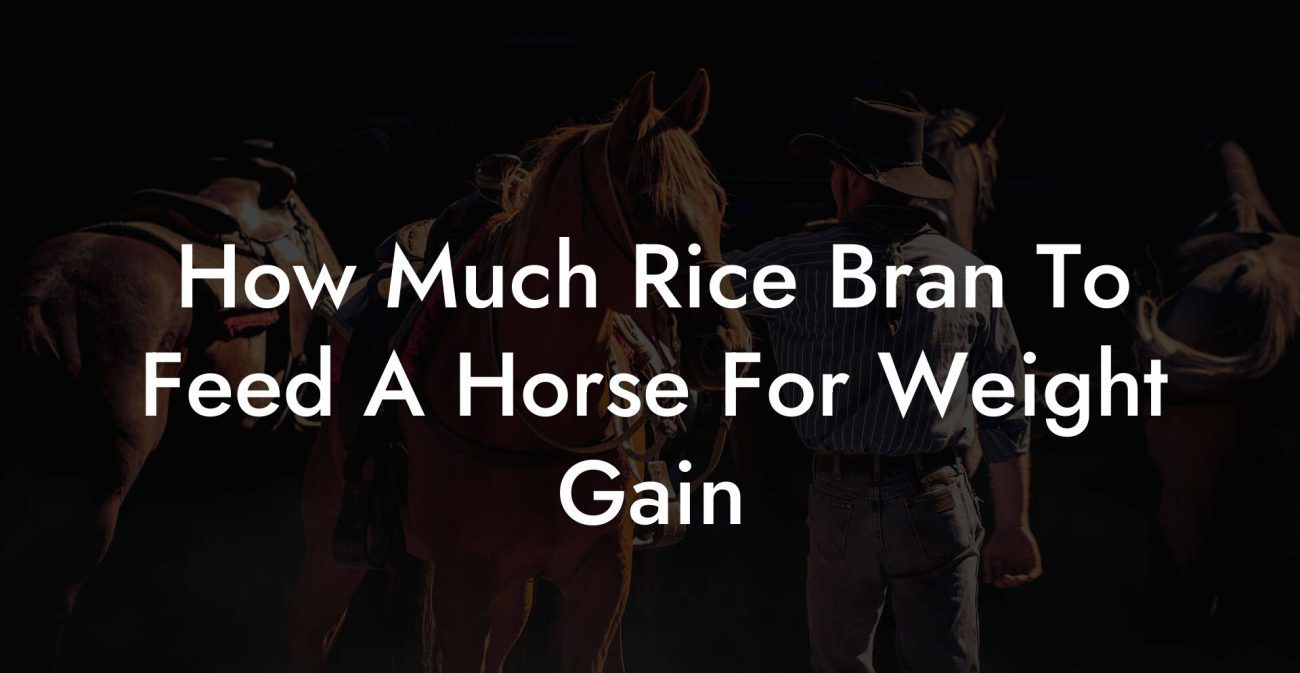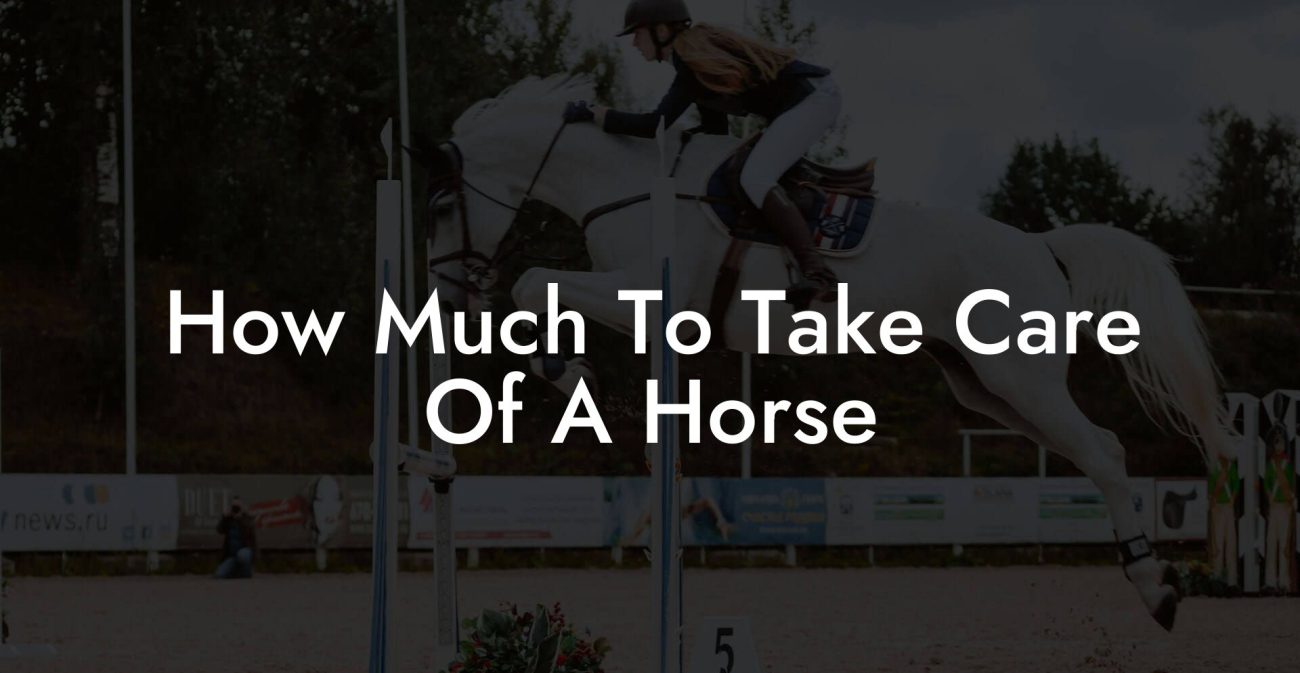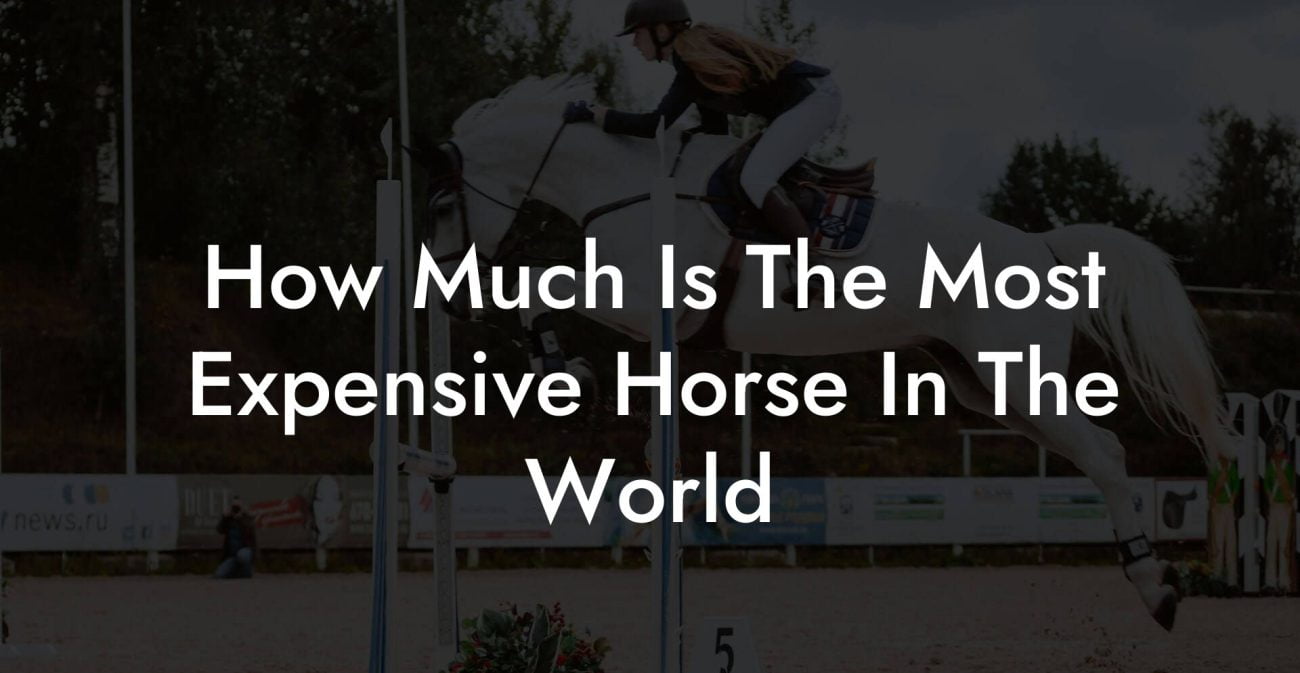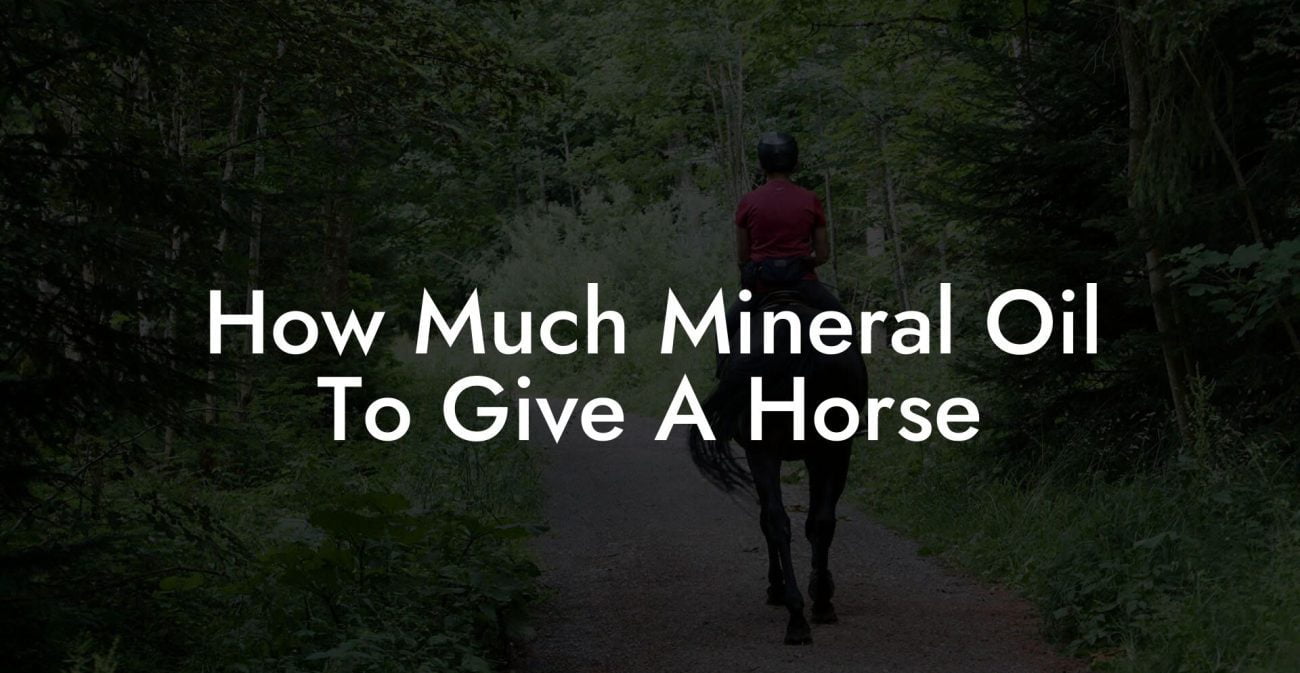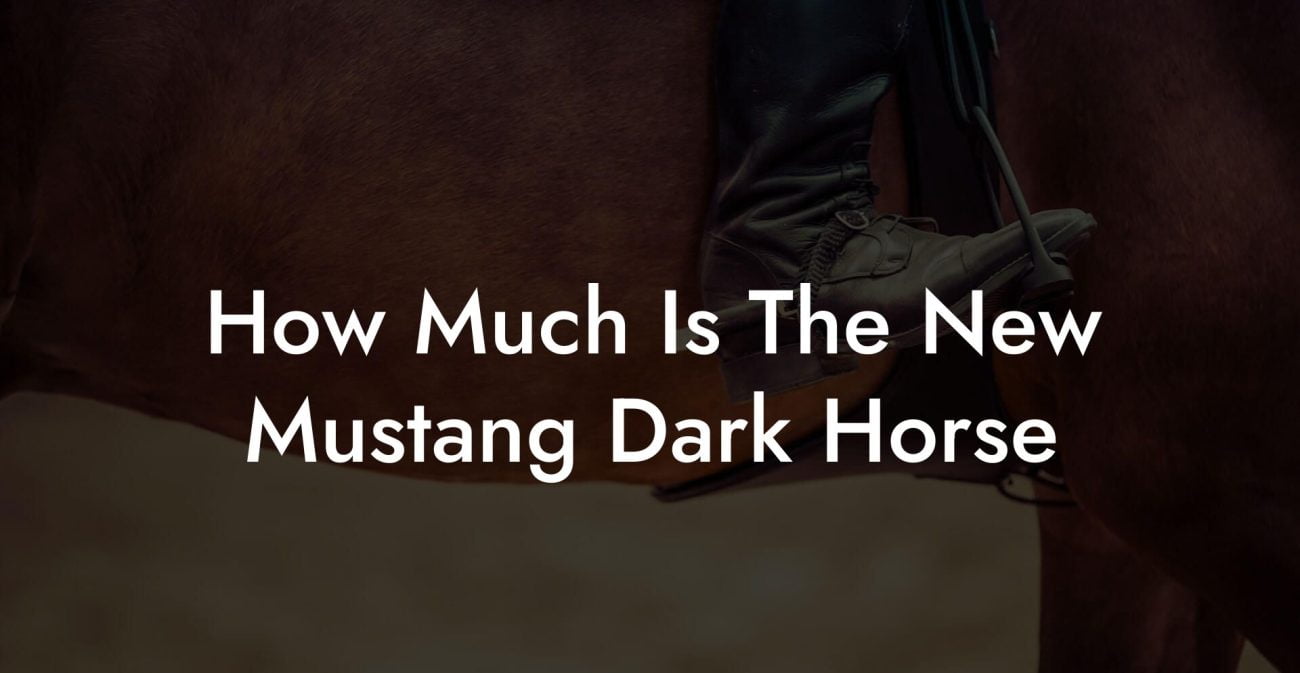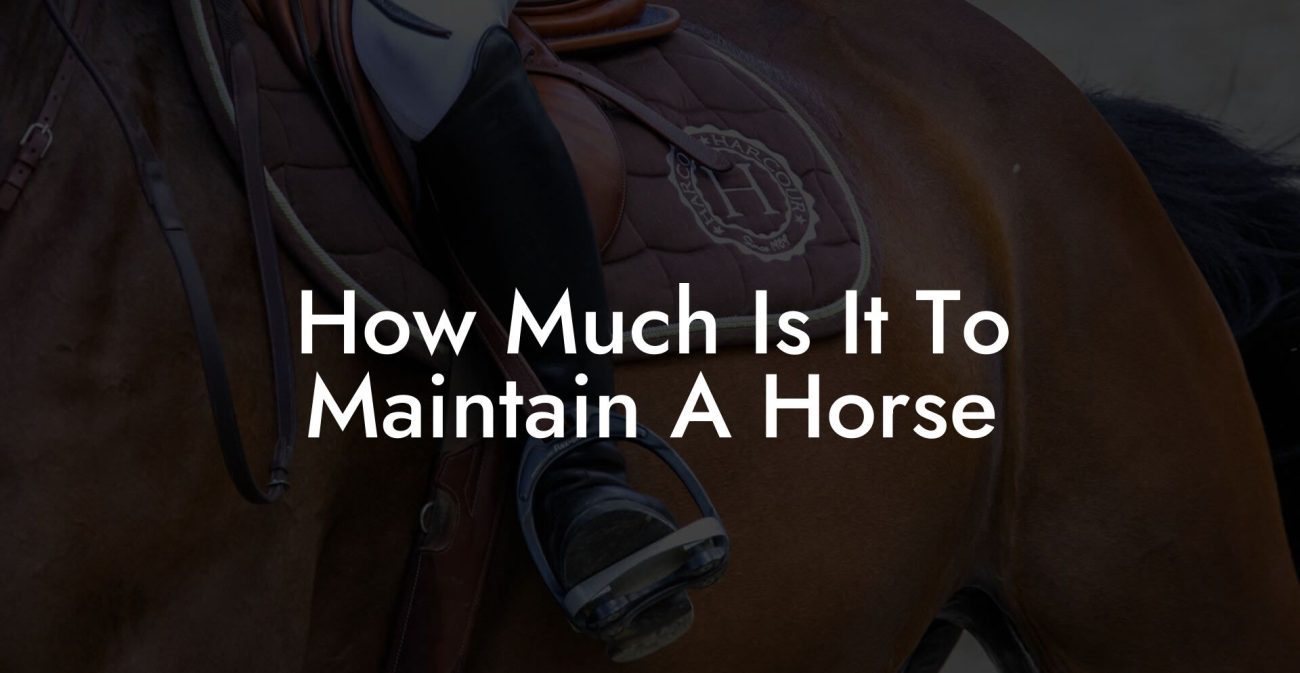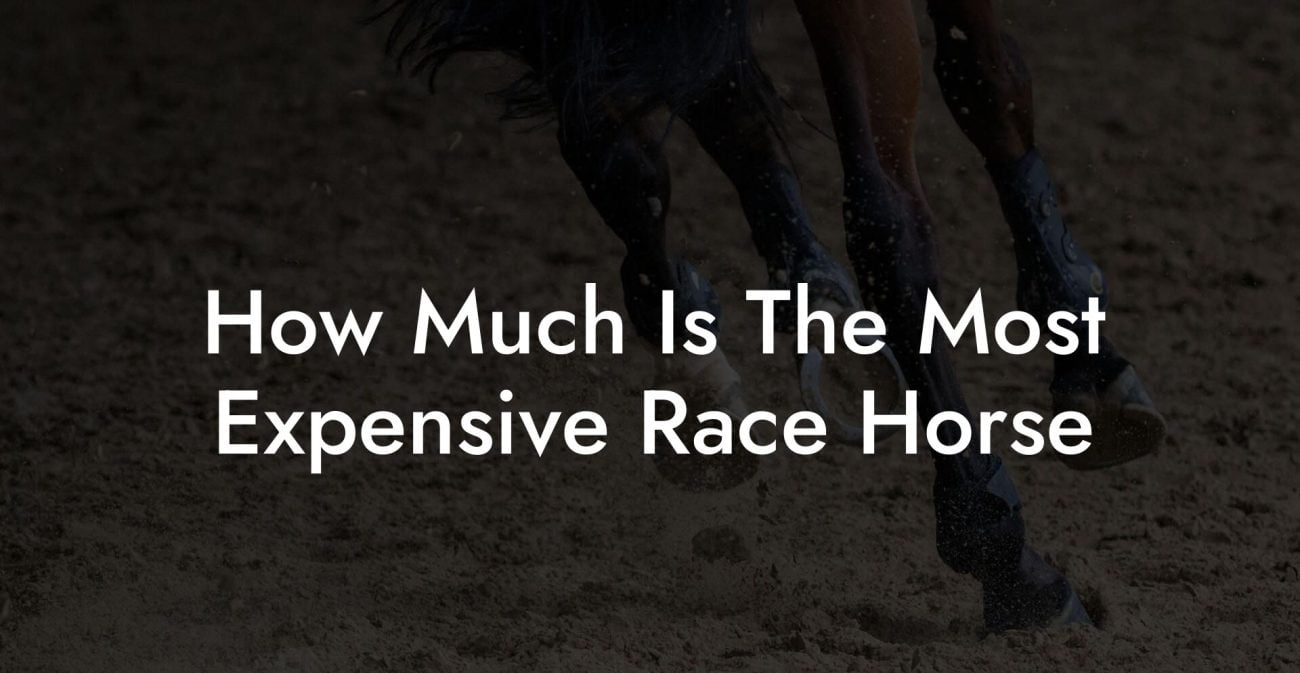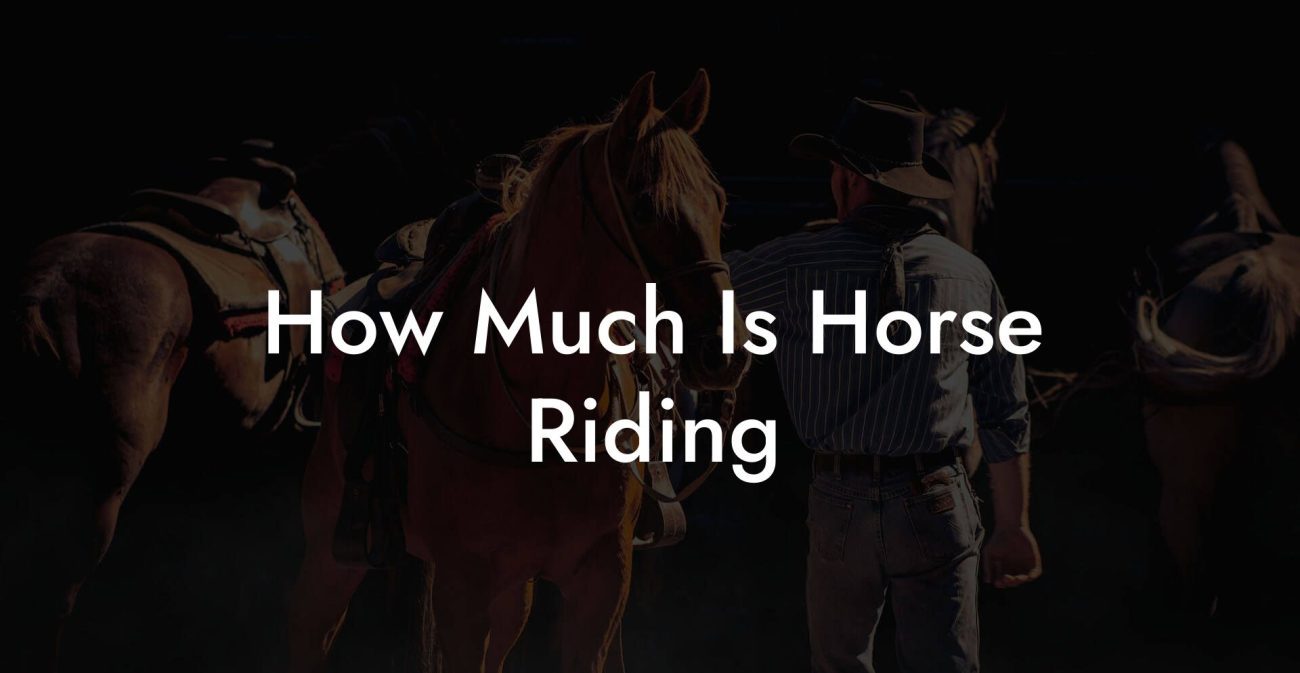Ever witnessed a horse suddenly shoot up onto its hind legs and thought, “Is this a majestic dance or a rebellious moment?” The spectacle of a horse rearing—the act of standing on its hind legs—might look like something straight out of a wild action movie, but it’s actually a fascinating natural behavior that has intrigued equine enthusiasts for centuries. Whether you’re a seasoned horse owner or a curious newcomer eager to care for your equine pal, this in-depth guide uncovers every aspect of why horses rear, how to interpret this behavior, and the best practices to ensure your four-legged friend stays safe, happy, and healthy.
Quick Links to Useful Sections
- What’s It Called When a Horse Stands On Hind Legs?
- The Many Faces of Equine Rearing: Understanding Why Horses Rear
- Rearing as a Playful Antic
- Rearing as a Defensive Response
- Rearing Due to Discomfort or Pain
- Rearing as a Communication Tool
- Interpreting Rearing: What Your Horse Might Be Telling You
- Safety First: Handling a Rearing Horse
- Stay Calm and Collected
- Assess Your Surroundings
- Keep a Safe Distance
- Seek Professional Guidance
- Training Techniques to Curb Unwanted Rearing
- Positive Reinforcement
- Desensitization
- Counter-Conditioning
- Consistent Handling and Routine
- Equine nutrition and Wellbeing: Fueling Balanced Behavior
- Optimal Nutrition
- Hydration Matters
- Regular Health Check-ups
- The Cultural Icon: Horses Rearing in Art and Pop Culture
- Embracing Equine Behavior: A Holistic Approach to Horse Care
- Resources and Community Support: Your Next Steps
- Charting a Course for Continuous Equine Education
- Deep Dive: Advanced Equine Behavioral Science
- The Role of Technology in Modern Horse Care
- Leveraging Social Media: Sharing Your Equine Journey
- Equine First Aid: Quick Tips for Unexpected Rearing Episodes
- Equine Enrichment Activities: Channeling Energy Constructively
- FAQ: Your Equine Rearing Questions Answered
- Your Journey to Empowered Equine Care
What’s It Called When a Horse Stands On Hind Legs?
In the equestrian world, when a horse stands on its hind legs, it’s known as "rearing." This behavior can be both graceful and intimidating—a mix of high drama and pure instinct. At its simplest, rearing involves the horse lifting its forehand off the ground, sometimes for just a flicker of a moment, and at other times, for several seconds. But beyond the mere physical act, rearing is a window into a horse’s mind, shedding light on everything from their mood and health to their training and environment.
Though the term “rearing” might sound like something out of a dusty old equine lexicon, it’s actually a dynamic behavior that can have multiple causes. Sometimes, a horse rears just because it’s excited or playful; other times, it might be a reaction to fear or discomfort. And yes, while the sight of a rearing horse might send a chill down your spine if you’re unprepared, understanding the context can help you tame the drama and ensure proper care and safety in managing your steed.
The Many Faces of Equine Rearing: Understanding Why Horses Rear
Horses are complex creatures with a rich vocabulary of body language. Rearing, in particular, is a behavior that can signal multiple underlying messages. Let’s break down the various “faces” of rearing and what each might be trying to tell you.
Rearing as a Playful Antic
It’s not always doom and gloom when a horse rears. Sometimes, it’s just your horse letting loose its inner circus performer. Playful rearing is common among young horses or those who are simply full of energy. Much like a teenager’s exuberant outburst, a playful rear can be a healthy display of exuberance—provided it's done in a safe environment. Watch for a twinkle in your horse’s eye, a relaxed muzzle, and an overall bouncy gait right after the spectacle, and you might just be witnessing a joyful moment of horse play.
Rearing as a Defensive Response
On the flip side, rearing can also be a defensive mechanism. Picture this: you’re out on a trail, and something in the distance sparks an alarm in your horse. Rearing in such cases is often a way to shift weight quickly in response to sudden fear or perceived danger. This form of rearing is typically accompanied by other stress signals—like pinned ears, wide eyes, or even a snort—that suggest your horse isn’t feeling all that secure. Recognizing the difference between playful and defensive rearing is key to managing your horse’s safety and emotional well-being.
Rearing Due to Discomfort or Pain
Sometimes, rearing isn’t about excitement or fear at all—it might be your horse’s way of saying, “Something hurts!” Health issues such as pain from dental problems, musculoskeletal discomfort, or even an improperly fitted saddle can prompt a horse to rear. When rearing emerges as a recurring behavior with a less-than-enthusiastic spark, it’s important to rule out medical causes. After all, our equine companions, much like us, communicate their discomfort in ways that demand our attention and care.
Rearing as a Communication Tool
Beyond the immediate causes, rearing is also a form of communication. Horses use body language to express their emotions and set boundaries. In some scenarios, a well-timed rear can be a warning—an unmistakable signal that they’re uncomfortable with a particular situation or the way they are being handled. For the modern horse owner, especially those tuned into Gen-Z and millennial vibes, understanding this non-verbal language is just as crucial as mastering social media trends. It’s all about reading the mood, knowing the cues, and fostering a trusting relationship with your animal.
Interpreting Rearing: What Your Horse Might Be Telling You
Just like deciphering a friend's ambiguous text message, interpreting a horse’s rearing involves reading between the lines. Look beyond the dramatic moment of the rear itself and consider the context:
- Environmental Triggers: Sudden loud noises, unfamiliar objects, or even changes in routine can set your horse off. Paying close attention to these triggers can help you maintain a calm environment.
- Behavioral Trends: Is the rearing a one-off event or part of a pattern? Repeated rearing might point to deeper training issues or physical discomfort.
- Physical Cues: Combine the act of rearing with other body language signals—dilated nostrils, tense muscles, and tail position can all provide hints about your horse’s state of mind.
By taking a holistic view, you can provide the right response, whether that means soothing a frightened horse or redirecting an overly boisterous one.
Safety First: Handling a Rearing Horse
Let’s face it: few things are as heart-stopping as a horse rearing up when you’re least expecting it. But don’t hit the panic button just yet—safety and strategic handling are your best friends in these moments. Here are some practical tips for managing a rearing horse:
Stay Calm and Collected
Horses are incredibly perceptive animals. If they sense that you’re panicking, it can exacerbate their stress. Instead, take a deep breath and engage with your horse using a calm and assertive tone.
Assess Your Surroundings
Before approaching a rearing horse, ensure that the area is secure. Clear away any obstacles that might cause injury or make the situation worse. This is especially crucial for younger or less experienced horse handlers who might not have an instinct for equine behavior yet.
Keep a Safe Distance
Unless you’re an experienced professional, it’s best to avoid getting too close when your horse is rearing. Give them the space they need to regain their balance and composure, and allow them to come back down on their own.
Seek Professional Guidance
If rearing becomes a regular behavior, consider consulting a professional trainer or equine behaviorist. These experts can help identify the root cause of the behavior—be it training, health, or environmental—and put together a tailored plan to address it.
Training Techniques to Curb Unwanted Rearing
While rearing can be an instinctual behavior, it’s essential to manage it effectively, especially if it poses a risk to you or your horse. Here are some training techniques that can help mitigate problematic rearing:
Positive Reinforcement
Instead of punishing your horse when they rear, use positive reinforcement to encourage calmer behavior. Reward your horse with treats, praise, or a favorite activity when they remain calm under stress. This method reinforces good behavior over time.
Desensitization
Gradual exposure to triggers that cause rearing can help desensitize your horse. For example, if loud noises set your horse off, play recordings at a low volume and slowly increase the intensity as your horse shows signs of acclimation. This measured approach helps them build tolerance without the need for extreme reactions.
Counter-Conditioning
Counter-conditioning involves teaching your horse to associate a previously negative trigger with a positive outcome. For instance, if an unfamiliar object scares your horse and prompts a rear, pairing the presence of that object with a reward can help change their emotional response over time.
Consistent Handling and Routine
Horses thrive on routine. A consistent handling regimen helps them feel secure and understand what to expect from their environment. This stability can reduce anxiety and, by extension, lessen the likelihood of rearing.
With patience, practice, and the occasional treat, these training techniques can significantly reduce unwanted rearing, transforming a potentially dangerous behavior into a manageable quirk of your horse’s personality.
Equine nutrition and Wellbeing: Fueling Balanced Behavior
A well-fed, well-hydrated, and well-cared-for horse is less likely to exhibit stress-induced behaviors like rearing. Modern horse care for Gen-Z and millennial enthusiasts isn’t just about flashy Instagram pictures—it’s about nurturing every aspect of your equine’s well-being.
Optimal Nutrition
The food you offer your horse plays a crucial role in their overall behavior and health. A diet that balances quality hay, grains, and fresh water helps maintain steady energy levels and reduces irritability. Look for feeds that are rich in essential vitamins and minerals, while avoiding excessive sugars that could lead to hyperactivity or digestive discomfort.
Hydration Matters
Just as you’d never skip a coffee on a busy morning, ensuring your horse stays hydrated is vital. Adequate water intake supports not only digestion and metabolism but also maintains the elasticity of muscles and tendons—thereby lowering the risk of discomfort-induced rearing.
Regular Health Check-ups
Routine veterinary visits help identify potential issues before they turn into full-blown problems, such as chronic pain that might trigger rearing. Dental check-ups, joint health assessments, and hoof care are all essential practices that keep your horse in peak condition.
In essence, a well-cared-for horse is a happy horse—and a happy horse is far less likely to resort to dramatic displays of rearing unless, of course, it’s just feeling playful!
The Cultural Icon: Horses Rearing in Art and Pop Culture
It’s hard to ignore the image of a rearing horse when you flip through history books, watch epic films, or even browse your favorite memes. This fascinating behavior has inspired countless works of art, from classical equine sculptures and renaissance paintings to iconic movie scenes and contemporary street art.
Think of the legendary statue of a rearing horse on parade grounds or in the pages of a history book—the raw energy, power, and beauty encapsulated in that moment has become a cultural symbol of strength and freedom. Even today, when you see a rearing horse depicted on logos, album covers, or digital art, it’s a nod to the timeless allure of these magnificent animals. This pop culture reverence often sparks conversations among younger horse enthusiasts, blending deep historical respect with modern-day trends.
Embracing Equine Behavior: A Holistic Approach to Horse Care
As you navigate the sometimes baffling world of equine behavior, it’s essential to adopt a holistic approach to horse care that allows you to address both physical and emotional needs. After all, your horse is not just an animal to manage, but a full-blown creature full of personality, emotion, and hidden depths. Embracing this holistic perspective means considering a variety of strategies:
- Behavioral Assessments: Observe your horse daily and note any changes in behavior. Journaling these observations can help you identify trends that may indicate underlying health issues or signs of stress.
- Consistent Training: Integrate training into your daily routine not just as a corrective measure but as a way to bond with your horse. Mixing in fun activities while reinforcing good behavior can transform training sessions into engaging experiences.
- Environmental Enrichment: Ensure that your horse’s living area is safe, comfortable, and stimulating. Simple additions like varying the pasture layout, providing toys, or creating quiet spaces for rest can make a significant difference.
- Mental Stimulation: Much like humans, horses benefit from mental challenges. Puzzle feeders, varied walking routes, and interactive play—these can help keep your horse’s mind active and reduce boredom-induced rearing.
- Regular Social Interaction: Horses are highly social animals. Interactions with other horses and positive time spent with you can promote confidence and reduce the stress that often leads to unwanted behavior.
Integrating these diverse elements into your horse care routine not only reduces the risk of problem behaviors like excessive rearing but also builds a solid foundation of trust, security, and mutual respect.
Resources and Community Support: Your Next Steps
Equipped with knowledge about why horses rear and how to keep them safe, the next step is joining a community of like-minded equine enthusiasts. The modern world offers an abundance of resources—from online forums and social media groups to local equestrian centers and workshops.
For the digitally connected millennial or Gen-Z horse owner, the online world is your oyster: You can follow expert trainers on YouTube, join Facebook groups dedicated to solving equine behavior puzzles, or subscribe to newsletters that share the latest insights in horse care. Don’t hesitate to reach out and share your experiences, ask questions, and learn from the journeys of others.
Whether you’re looking for training tips, health advice, or just a community that truly understands your passion for these magnificent animals, remember: You’re never alone on your horse care adventure. Embrace the blend of high-tech insights and age-old traditions as you step forward into a world where each rearing moment is not a setback but an opportunity to affirm your commitment to understanding and nurturing your horse.
Charting a Course for Continuous Equine Education
In the world of horse care, the learning journey is never really complete. Every rearing incident, every playful toss of the head, and every quiet moment of bonding serves as a lesson. Equip yourself with a solid knowledge base by attending workshops, reading reputable equine publications, and participating in hands-on training sessions provided by trusted equine experts.
Continuous education helps you stay abreast of modern developments in equine health, nutrition, and behavioral science. From innovative saddle fitting techniques to the latest in equine nutrition trends, expanding your expertise can make all the difference in fostering a secure, happy life for your horse. After all, a well-informed horse owner is an empowered horse owner.
Deep Dive: Advanced Equine Behavioral Science
For those ready to take a deep dive into the science behind equine behavior, there’s a treasure trove of information waiting for you. Advanced studies show that rearing isn’t just random mischief; it’s often a sophisticated response that involves neurobiology, instinctive survival mechanisms, and even learned behavior. Variations in a horse’s rearing style, frequency, and context can reveal a lot about its temperament, past experiences, and even its current satisfaction with its environment.
Consider the influence of hormones and neurological responses that prime a horse for rapid action when needed. When faced with stress, a horse’s adrenaline may surge, triggering a rearing response as part of a natural “fight or flight” instinct. Equine scientists continue to explore these phenomena, offering insights that can ultimately be translated into better handling, training, and care practices.
By embracing both the art and science of equine behavior, you can position yourself at the cutting edge of horse care. Whether you’re reading up on the latest research studies or connecting with experts in the field, every bit of knowledge contributes to a deeper, more compassionate relationship with your horse.
The Role of Technology in Modern Horse Care
In an era where technology intertwines with virtually every aspect of life, modern horse care also has its high-tech side. From wearable devices that monitor your horse’s vital signs and movement to smartphone apps that track daily activity and behavior patterns, the digital realm offers innovative tools that can enhance your understanding of your horse’s health.
These technological advancements not only help in identifying issues like over-excitement that may lead to rearing but also offer real-time updates on your horse’s overall well-being. With a few taps on your device, you can monitor dietary habits, exercise routines, and even schedule reminders for routine health checks. This tech-savvy integration is particularly appealing to millennial and Gen-Z horse owners who blend traditional care methods with modern innovations.
Leveraging Social Media: Sharing Your Equine Journey
Social media has revolutionized the way we share our lives, and horse care is no exception. Platforms like Instagram, TikTok, and Facebook have become vibrant communities where horse enthusiasts showcase everything from breathtaking rearing moments to behind-the-scenes training insights.
Sharing your journey not only inspires others but also strengthens your own commitment to continuous learning. Whether you’re posting a video of a playful rearing moment with a cheeky caption or participating in live Q&A sessions with equine experts, these interactions build a supportive network that values both education and camaraderie.
Embrace the digital age by connecting with fellow horse lovers online—share your successes, ask for advice during challenging times, and celebrate the unique quirks that make your horse one-of-a-kind.
Equine First Aid: Quick Tips for Unexpected Rearing Episodes
Even with meticulous care and training, unexpected rearing episodes can catch you off guard. That’s why having a solid equine first aid knowledge base is essential. Here are some quick tips to keep in mind during those heart-pounding moments:
- Keep Your Distance: Safety should always come first. Avoid getting too close until your horse regains equilibrium.
- Check for Injuries: Once the excitement subsides, inspect your horse for any signs of injury—bruises, swelling, or lameness that might indicate an underlying issue.
- Calm Verbal Reassurance: Use a soothing tone to help calm your horse down. A muted, steady voice can convey reassurance during alarming moments.
- Contact a Professional: If rearing becomes frequent or if you suspect a health issue, consult your veterinarian or a seasoned equine trainer immediately.
- Document the Incident: Note down the time, surroundings, and any potential triggers. Keeping a record can be incredibly valuable for future training or when discussing the behavior with a professional.
These first aid tips are not only practical but also reinforce the idea that every rearing incident is an opportunity to learn more about your horse’s needs.
Equine Enrichment Activities: Channeling Energy Constructively
A bored or frustrated horse is more likely to express itself dramatically through rearing. Instead, channel that vibrant energy into activities that promote constructive behavior. Here are some enrichment ideas to keep your horse physically and mentally engaged:
- Obstacle Courses: Set up a simple course in your paddock with cones, poles, and small jumps to create a fun challenge that stimulates both body and mind.
- Interactive Feeding: Use puzzle feeders or hide treats around the stable to encourage foraging behavior and mental stimulation while satisfying your horse's natural instincts.
- Group Play: If your horse is sociable, allow supervised interaction with other horses. Social play can redirect excess energy and reduce the likelihood of attention-seeking rearing.
- Trail Rides: A change of scenery can work wonders. Regular trail rides not only provide exercise but also enrich your horse’s sensory experiences in a controlled and safe environment.
These activities not only deter unwanted behaviors but also foster a deeper bond between you and your horse as you explore interactive, fun-filled experiences together.
FAQ: Your Equine Rearing Questions Answered
We know that when it comes to understanding why your horse rears and how to handle it, you likely have a barrage of questions. Here are some of the most frequently asked questions from horse owners and enthusiasts alike:
1. What exactly does it mean when a horse rears?
Rearing is when a horse lifts its front legs off the ground, often as a reaction to excitement, fear, or discomfort. It’s a natural behavior that can have various meanings depending on the context.
2. Is rearing dangerous for my horse?
While rearing can be a normal expression of a horse’s behavior, it can be dangerous if it happens unexpectedly or frequently. It may signal underlying issues such as fear, pain, or training deficiencies.
3. How can I tell if my horse is rearing playfully or out of fear?
Observe the body language. A playful rear will usually come with relaxed facial features and a twinkle in the eye, whereas fear-induced rearing may include wide eyes, pinned ears, and an overall tightened posture.
4. What should I do if my horse begins to rear?
Safety first! Stay calm, give your horse space, and assess for potential triggers or injuries. If the behavior continues or worsens, seek guidance from a professional trainer or veterinarian.
5. Can training help reduce rearing?
Absolutely. Training techniques like positive reinforcement, desensitization, and counter-conditioning can help modify rearing behavior over time.
6. Are there specific nutritional needs that may reduce rearing?
Yes. Feeding a balanced diet that meets your horse’s nutritional needs can reduce irritability and stress, thereby minimizing excessive rearing episodes.
7. How do I differentiate between rearing due to excitement and rearing due to pain?
Look at the overall behavior and consult with your veterinarian. If the rearing is accompanied by signs of discomfort or changes in movement, it’s wise to have your horse evaluated for potential health issues.
8. Is rearing more common in certain breeds or age groups?
Younger horses and certain spirited breeds may be more prone to rearing due to their high energy levels, but it really depends on individual personality and training.
Your Journey to Empowered Equine Care
Embracing the multifaceted world of equine behavior—especially the dramatic yet awe-inspiring act of rearing—is about more than just managing a moment of adrenaline. It’s about building a relationship founded on trust, understanding, and mutual respect. When your horse rears, it’s not just a random act but a story in motion, a tale of emotion, health, and instinct that you, as an informed and compassionate caretaker, are now prepared to decode.
With the insights shared in this guide, you’re now equipped to interpret the signals behind your horse’s rearing behavior, implement effective training and safety strategies, and create an environment that nurtures both physical health and emotional well-being. Remember, every rearing episode is a conversation—a chance to learn, adapt, and continue growing together on this journey.
So next time you see your horse lift those majestic legs in a sudden burst of energy, take a moment to appreciate the intricate dance of instinct and expression. Whether it’s a display of playful exuberance or a subtle sign of anxiety, you now have the tools to respond with care, creativity, and confidence. Embrace the challenge, celebrate the quirks, and continue your adventure in equine care with the knowledge that you’re building a lasting, harmonious bond.
Let every rearing moment remind you that behind the bravado of a horse’s impulse lies a call for understanding and connection—a call that you are now more than ever ready to answer.

